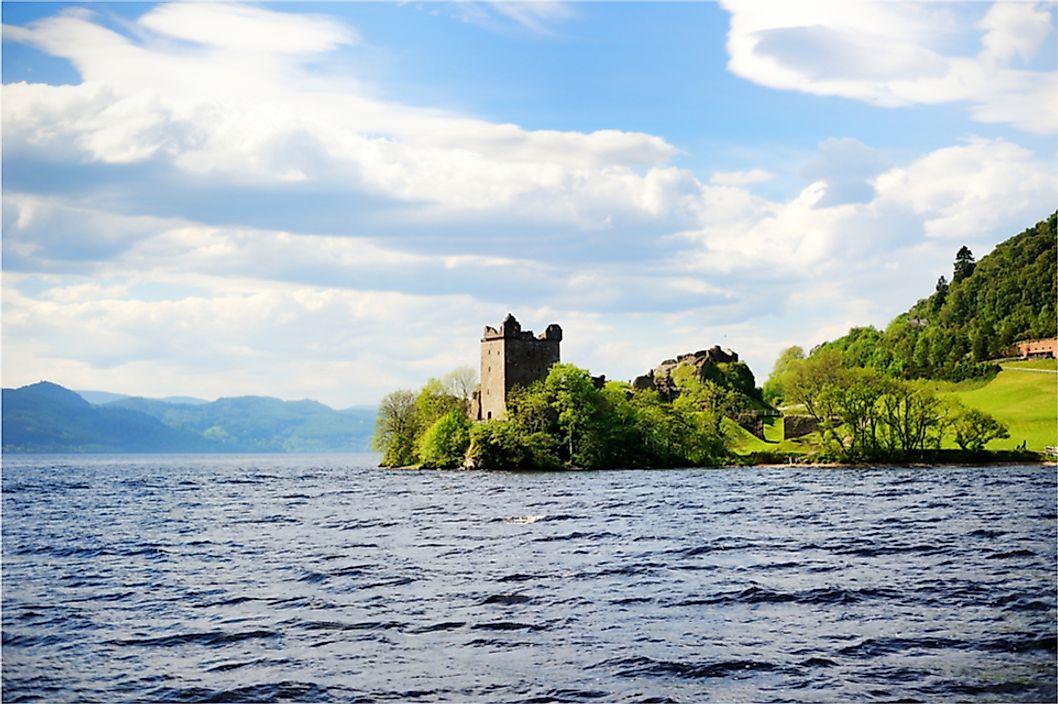What Is a Loch?

A loch is a Scottish name for a large area of water that that can be narrowly or partially landlocked. The word Loch originates from an Insular Celtic group of languages that originated in Britain and Ireland. Outside Scotland, a loch is a body of water that can be either a lake or sea inlet. Other terms similar to loch outside Scotland are firth, fjord, or bay. Sea inlet lochs are mostly called sea locks.
Uses of Lochs
Lochs are used as a water reservoirs for hydropower generation. The free waterfalls in some Lochs have been utilized, while others have been redesigned for higher power generation. Examples of these lochs include the Loch Sloy scheme, Loch Raven Dam Rehabilitation, and Storr Lochs. The principal ports and harbors in Scotland are all situated in sea lochs, and include ports from Glasgow up to Kinlochbervie. The ferries in these lochs act as the primary means of transportation for both goods and people. Fishing is the primary economic activity in lochs, and is mostly carried out by small inshore boats. Creels are used to catch lobsters, velvet craps, brown crabs, and squat lobsters, while massive dredges are used to catch king scallops, which are then collected by divers.
Sea lochs are also crucial nursery grounds for many fish species, including herring, cod, saithe, and plaice. It is for this reason that many sea lochs are closed to trawls and dredges for certain parts of the year. Sea Lochs act as home to unique sea plants and animals, some of which exist only in sea lochs. Scottish sea lochs are home to more than 1,700 species of marine invertebrates and seaweeds. The seaweeds are harvested and used as fertilizers and soil conditioner. Different industries like food, brewing, and pharmaceuticals also use seaweeds as raw materials for their products.
Threats to the Scottish Lochs
Since most of the Scotland lochs are located in remote areas, the majority are protected from industrial and commercial development, and the associated degradation such as pollution, destruction of habitat, sewage pollution, and intensive irrigation. However, other dangers to sea lochs include the following: the continued use of pesticides to control infestations of sea lice and antibiotics to control fish diseases, but are harmful to other marine life; the construction of bridges and partial infilling of loch sides to support new roads leads to the destruction of aquatic habitat; sewage and other effluents from settlements near lochs have polluted the water; and the accumulation of pollutants in sea lochs that are semi-enclosed is harmful to aquatic animals and plants.
Lochs in Scotland
A famous example of the lochs in Scotland is Loch Ness, which is a deep and vast freshwater loch situated in the Scottish Highlands. Located southwest of Inverness, Loch Ness is the second largest Scottish loch (Loch Lomond is the largest), and has a surface area of approximately 21.8 square miles. Loch Lomond, a freshwater loch which crosses the Highland Boundary Fault, is the second most famous loch in Scotland. Loch Fyne is the longest loch, extending 40 miles from the Sound of Bute Sea Loch in Scotland. Similarly, Loch Awe is a large freshwater loch, and is named after the village on its banks, which is known as Loch Awe or Lochawe.
Lochs Outside Scotland
Other sea lochs exist throughout the world, but they are mostly referred to as sea loughs. These include more than 12,000 loughs in Ireland. Well known loughs in Ireland include Lough Neagh, Lough Corrib, and Lough Derg.











